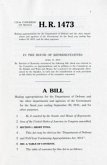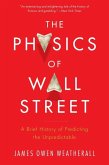The Economics of Credit Rating Agencies explores the economic and regulatory issues and frictions associated with credit rating agencies in the aftermath of the financial crisis. While ratings and other public signals are important, they can discourage independent due diligence and be a source of systemic risk. The authors highlight the diverse underlying views towards these competing approaches to reducing systemic risk and discuss the subtle contrasts between credit rating agencies and other types of due diligence providers, such as auditors, analysts and proxy-voting advisors. After an introduction, Section 2 provides a broad discussion of ratings in the regulatory framework, as well as how ratings potentially crowd out private information production and the risks associated with overreliance on ratings in market pricing. Section 3 contrasts credit rating agencies with alternative gatekeepers, such as auditors, analysts and proxy-voting advisers. Section 4 describes the difficulty of selling information and the underpinnings of the payment model for various financial information intermediaries under alternative assumptions. Section 5 discusses of rating agency analyst conflict of interest. An important aspect of credit ratings is the feedback effect that arises when a firm's behavior responds to the change in the cost of funding that is influenced by the rating. Feedback effects arise because of contractual triggers, but also through coordination and learning channels. Section 6 discusses these channels and especially the learning channel. Section 7 discusses selection issues including rating shopping and the contrast between solicited and unsolicited credit ratings. Section 8 contrasts ratings across products, including sovereign debt, and rating agencies. The nature of competition and the role of entry and reputation in the credit rating agency space are explored in Section 9. Section 10 examines why ratings matter, as well as techniques for identifying the real effects of ratings. The authors provide concluding observations and takeaways about rating agencies that emerged as a byproduct of the financial crisis in Section 11.
Hinweis: Dieser Artikel kann nur an eine deutsche Lieferadresse ausgeliefert werden.
Hinweis: Dieser Artikel kann nur an eine deutsche Lieferadresse ausgeliefert werden.








